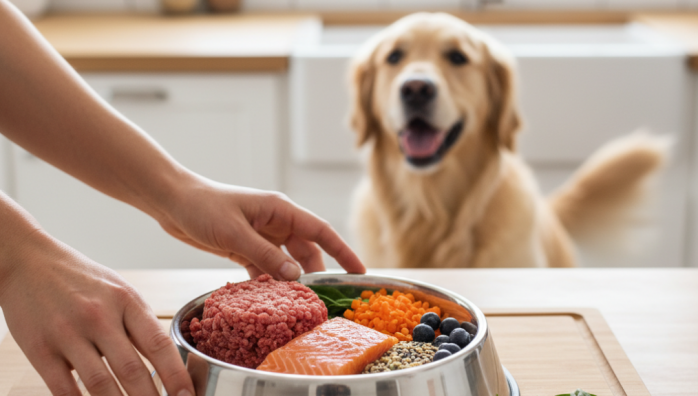Introducing raw food safely for pets
by admin in Pet Care Basics 16 - Last Update November 19, 2025

I remember the first time I seriously considered switching my dog to a raw food diet. I\'d heard so much about the benefits—shinier coats, better digestion, more energy—but honestly, I was overwhelmed and a little intimidated. The internet was full of conflicting advice, and the fear of doing something wrong was very real. But after a lot of research and a long chat with my vet, I decided to take the plunge, and I learned that the key isn\'t a dramatic overnight switch, but a careful, gradual introduction.
My first steps into the world of BARF
BARF, which stands for Biologically Appropriate Raw Food, felt like a huge leap from scooping kibble. My main goal was safety, both for my pet and my family. The first rule I set for myself was to go slow. A sudden dietary change can wreak havoc on a pet\'s digestive system, so patience is absolutely essential. I learned this the hard way with a previous foster dog, and I wasn\'t going to make that mistake again.
The gradual transition method
Instead of swapping out a full meal, I started by introducing a small spoonful of a commercial, pre-prepared raw patty alongside his regular food. I did this for about a week, keeping a close eye on his digestion and energy levels. Was he gassy? Were his stools normal? These are the not-so-glamorous but critical questions you have to ask.
- Week 1: 10% raw, 90% old food.
- Week 2: 25% raw, 75% old food.
- Week 3: 50% raw, 50% old food.
- Week 4: 75% raw, 25% old food.
- Week 5: 100% raw.
This slow-and-steady approach gave his system time to adapt to the new, nutrient-dense food. Of course, every pet is an individual, and this timeline might need to be adjusted. I always say, watch the pet, not the calendar. And remember, this is just my experience; I strongly recommend discussing any diet change with your veterinarian to create a plan that\'s right for your specific furry friend.
Handling raw meat safely in the home
One of my biggest initial fears was bacteria. The risk of salmonella or E. coli is real, but it\'s manageable with the same common-sense hygiene you\'d use when preparing chicken for your own dinner. I established a strict routine that gave me peace of mind.
My non-negotiable safety rules
I designated specific cutting boards and utensils just for my pet\'s food. After every meal prep, everything gets a thorough wash in hot, soapy water, followed by a disinfectant spray. I wash his stainless steel bowl immediately after he\'s done eating. I also wipe down all the surfaces the raw meat might have touched. It sounds like a lot, but it quickly becomes second nature and is a small price to pay for the benefits I\'ve seen.
What I learned about balance
Just throwing a piece of raw steak in a bowl isn\'t a complete diet. The BARF model I follow includes not just muscle meat, but also raw meaty bones, organs, and a small amount of pet-safe fruits and vegetables. Getting this balance right is crucial for long-term health. I started with a high-quality, complete commercial raw food to ensure he was getting all the necessary nutrients. Once I was more confident, I began exploring making my own blends, but that\'s a whole other journey. For anyone starting out, I truly believe a pre-made, balanced raw food is the safest and easiest way to begin.











